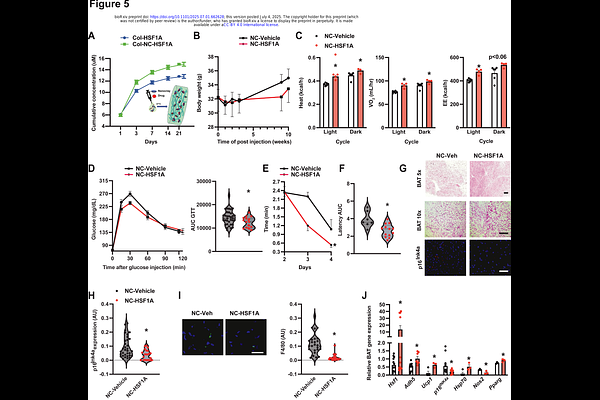Thermogenic Adipose ADH5 Counteracts Age-related Metabolic Decline

Thermogenic Adipose ADH5 Counteracts Age-related Metabolic Decline
Sebag, S. C.; Neff, T.; Qian, Q.; Asghari, A.; Wang, Z.; Zhang, Z.; Li, M.; Hao, M.; Lira, V.; Sun, H.; Potthoff, M. J.; Yang, L.
AbstractAging-associated decline in brown adipose tissue (BAT) function and mass contributes to energy and metabolic homeostasis disruption. Alcohol dehydrogenase 5 (ADH5) is a major denitrosylase that prevents cellular nitro-thiol redox imbalance, an essential feature of aging. However, the functional significance of BAT ADH5 in the context of aging is largely unknown. Here, we aimed to investigate the role of BAT ADH5 in protecting against age-related metabolic dysfunction. We show that aging promotes aberrant BAT protein S-nitrosylation modification and downregulates ADH5 in mice. Furthermore, BAT ADH5-deletion accelerates BAT senescence and aging-associated declines in metabolic homeostasis and cognition. Mechanistically, we found that aging inactivates BAT Adh5 by suppressing heat shock factor 1 (HSF1), a well-recognized proteostasis regulator. Moreover, pharmacologically enhancing HSF1 improved BAT senescence, metabolic decline, and cognitive dysfunction in aged mice. Together, these findings suggest that the BAT HSF1-ADH5 signaling cascade plays a key role in protecting against age-related systemic functional decline. Ultimately, unraveling the role of thermogenic adipose nitrosative signaling will provide novel insights into the interplay between BAT nitric oxide activity and metabolism in the context of aging.